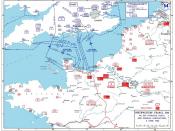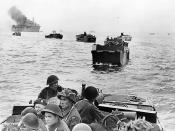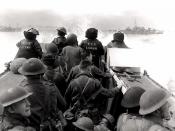D-Day, or the Day of Deliverance, is one of the most memorable events of WWII. Under the command of General Eisenhower, the commander-in-chief of the Allied forces, the invasion of Europe to win it back from Nazi Germany began June 6, 1944. The area chosen as the invasion point, was a strip of land along the coast of France, known as Normandy.
Before we discuss the actual invasion of Normandy, and its outcome, you must first understand the events that led up to it.
In 1942, the unsuccessful attack at Dieppe resulted in a massacre of Allied troops. After 68% of the soldiers were lost at Dieppe, the Allies were sure not to repeat anything similar. And while some would say, the entire plan had no point, there were several lessons learned from Dieppe.
1)Extremely dangerous to seize a defended port, a lot of preliminary bombing required
-the puny fire of a few destroyers was not enough if the allies had any hope of breaching Hitler's Atlantic wall
-This meant intense naval and air bombardment, hopefully to knock out bridges, airports, military bases, etc.
2)In order to successfully beat the Germans, the allies needed improved technology
-primarily better tanks that wouldn't get stuck on the beaches, and in mud
-This led to the development of special vessels such as the Landing Craft Tank (Rocket) to cover the beaches with explosives.
3)Poor communication with the beaches was one of the reasons troops were so disorientated
-this led to heavy investment in improved wireless equipment.
After Dieppe In 1943 the allies had a chance to test out their new landing craft in the invasion of Sicily. The Landing Ship Tank had entered production. It was a ship capable of putting as many as 20 tanks on the beach. After many tanks failed...



Canadian Heroes
This is an outstanding essay concerning the events surrounding one of the most momentous days in history. As an American, let me say how very much I appreciate the brave Canadians who risked their lives not only on the beaches of Normandy but also on many World War II battlefields where they distinguished themselves as courageous fighters in the cause of liberty. We are fortunate to have such fine allies and I am proud to have Canada as a friend and neighbor.
8 out of 8 people found this comment useful.